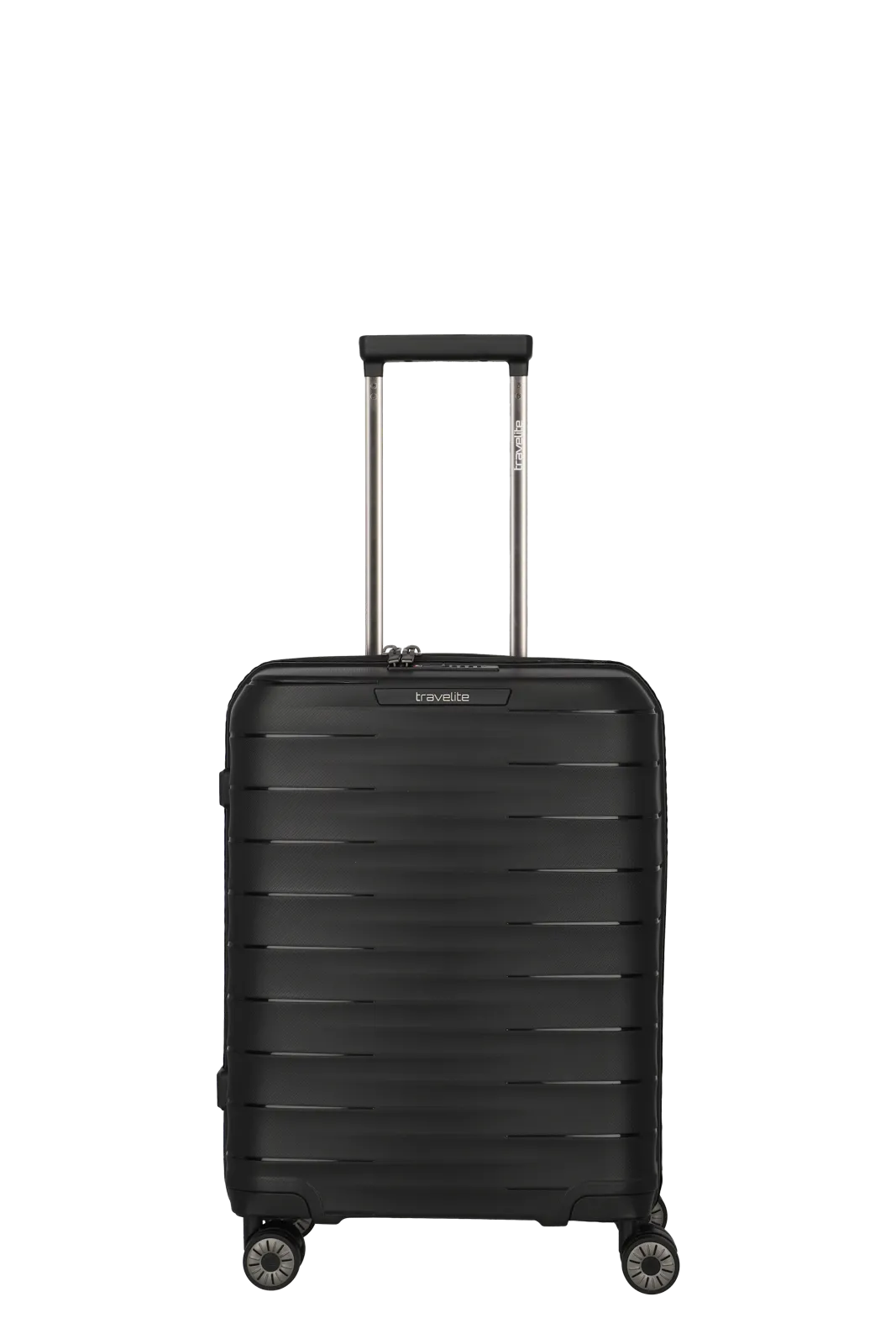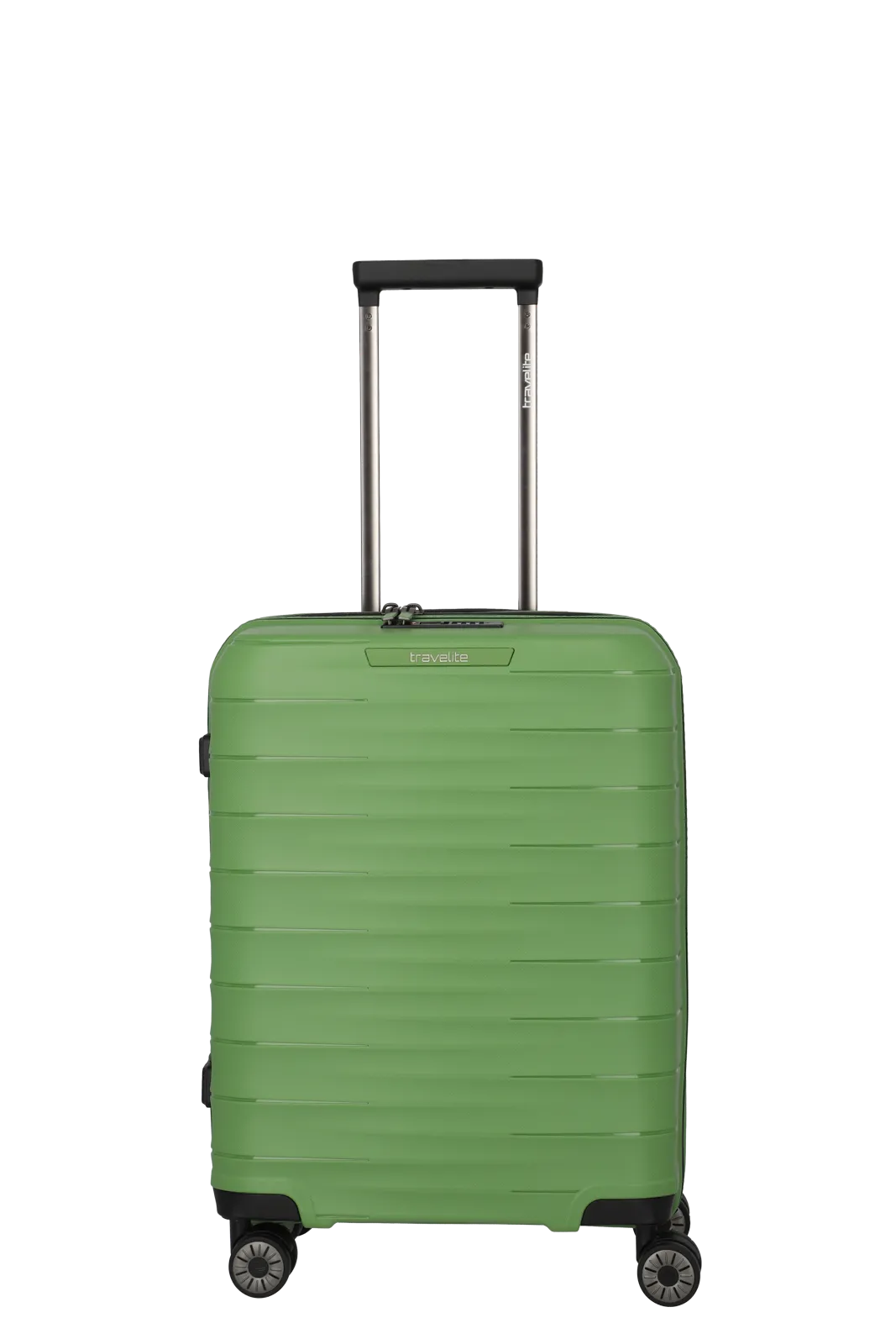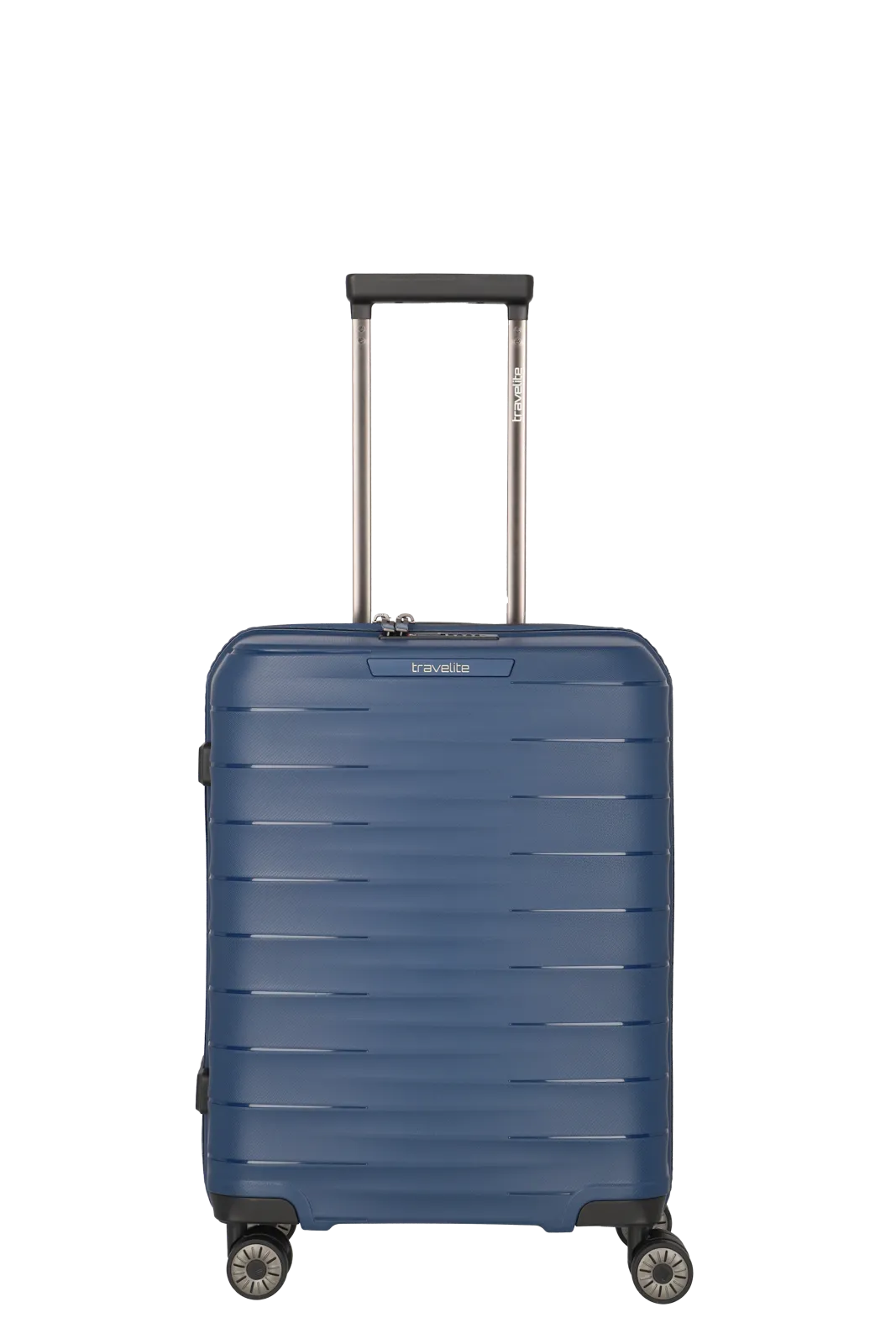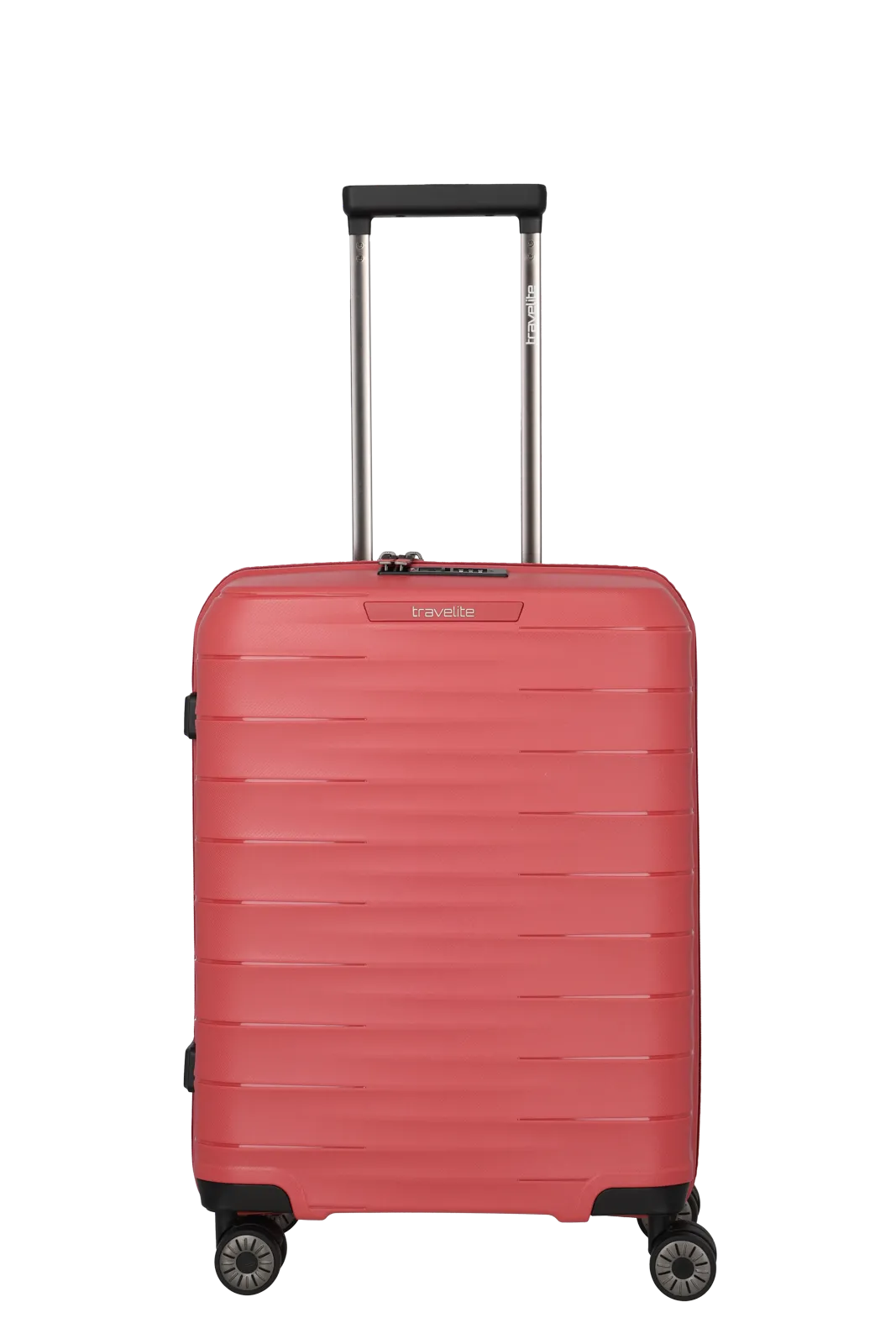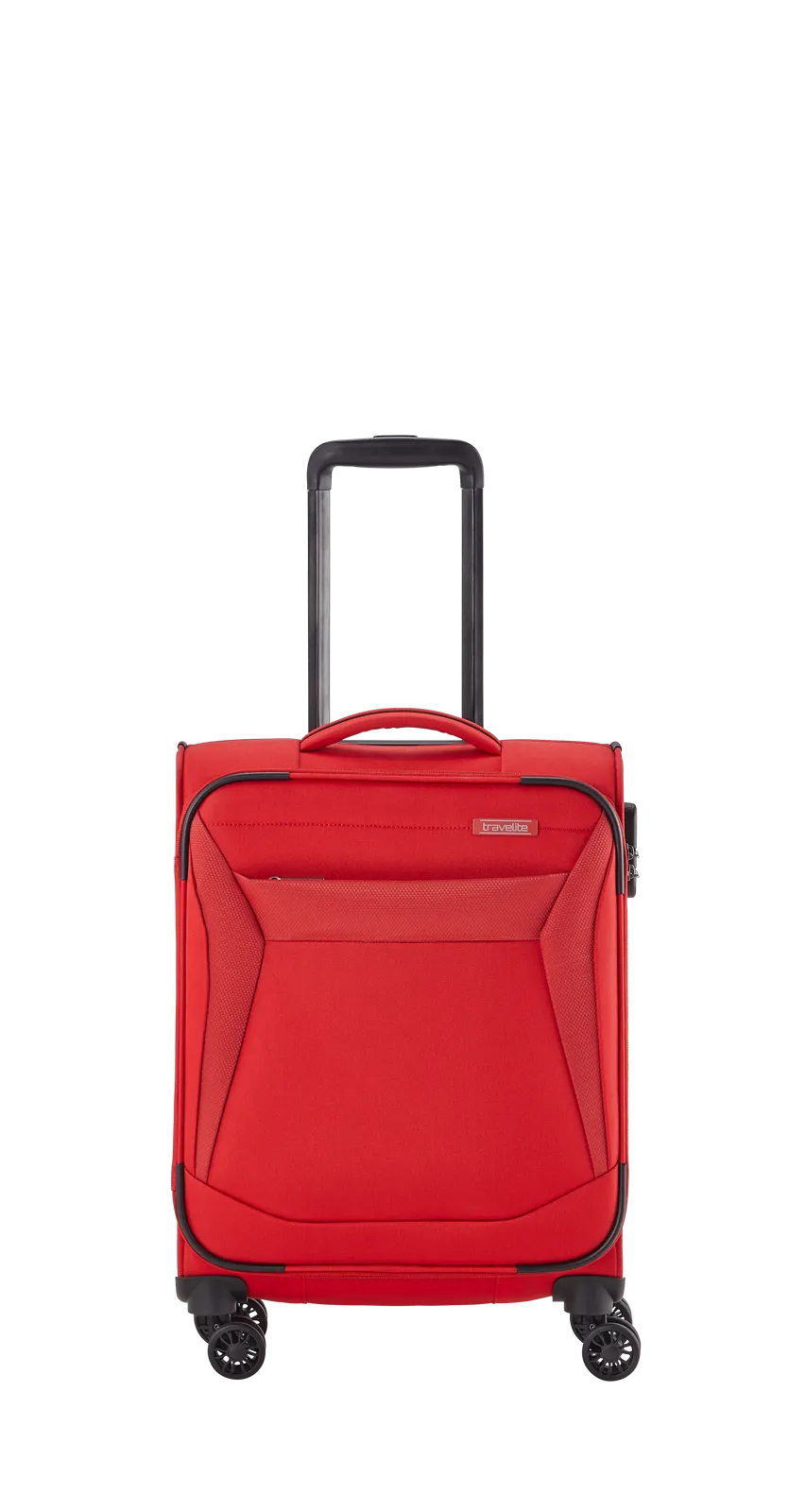Hand luggage - what you should consider before the trip
The trip is just around the corner and so is packing your suitcase. Especially if you are traveling by plane, there are some details you should pay attention to so that there are no unpleasant surprises at the airport. We will inform you about which items are not allowed to be taken in your hand luggage, what you should generally keep in mind when packing your hand luggage and how you can use it efficiently.
Hand luggage - what you should consider before the trip
The trip is just around the corner and so is packing your suitcase. Especially if you are traveling by plane, there are some details you should pay attention to so that there are no unpleasant surprises at the airport. We will inform you about which items are not allowed to be taken in your hand luggage, what you should generally keep in mind when packing your hand luggage and how you can use it efficiently.
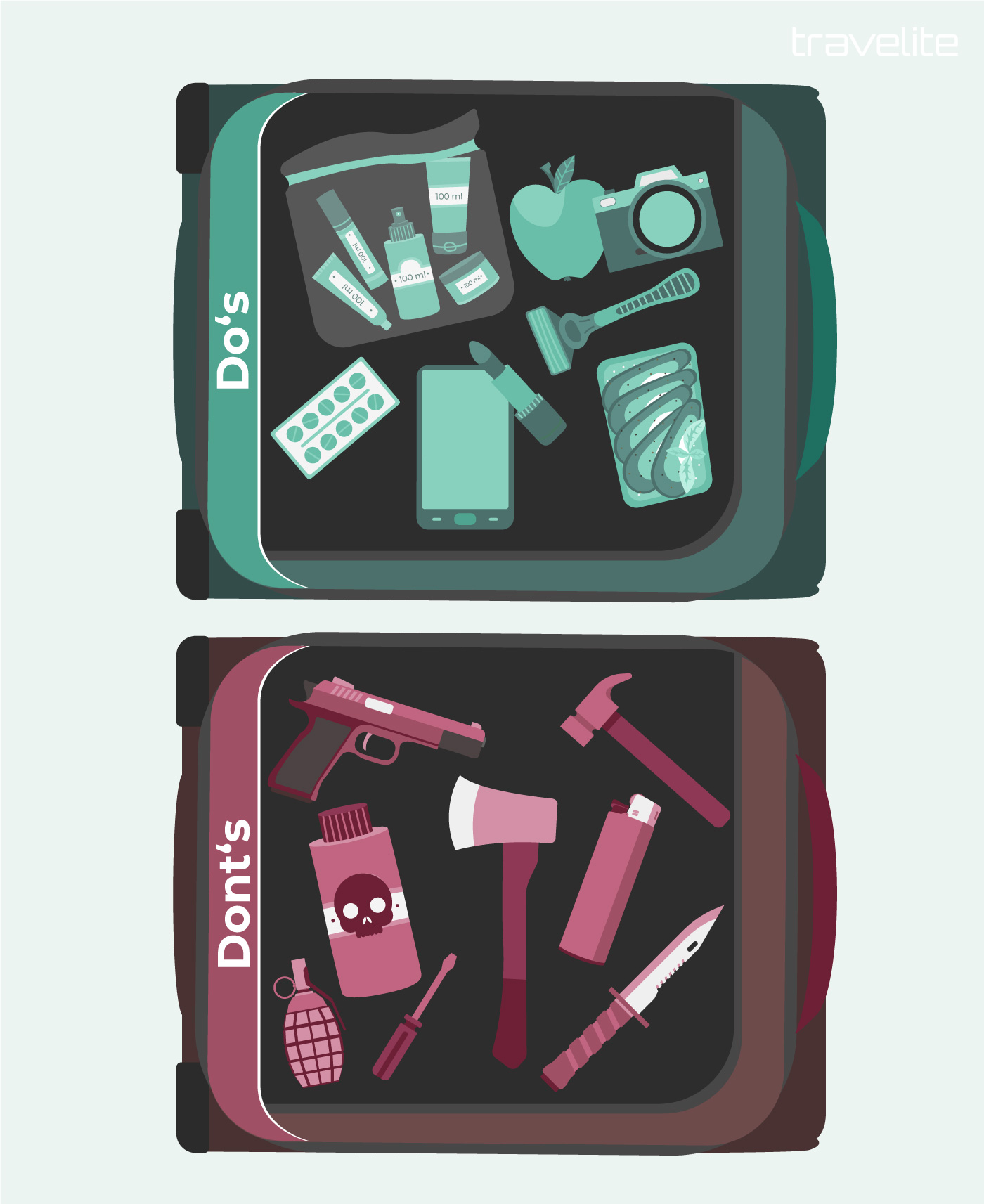
What is allowed in hand baggage?
| This is allowed in your hand luggage: | This is not allowed in your hand luggage: |
| | |
| | |
| | |
| | |
| | |
| | |
| | |
| |

What is allowed in hand baggage?
| This is allowed in your hand luggage: | This is not allowed in your hand luggage: |
| | |
| | |
| | |
| | |
| | |
| | |
| | |
| |
travelite ist heute wie vor über 70 Jahren immer noch ein Familienunternehmen. In inzwischen vierter Generation. Daher wissen wir auch, dass der beste Weg immer der gemeinsame ist. Nur wenn wir alles geben, können wir mit Sicherheit sagen: Gute Reise. Und komm bald wieder. Denn am Ende macht das nicht nur eine gute Partnerschaft aus – sondern vor allem auch die Basis für tolle Produkte. Unsere Produkte. Für Dich.
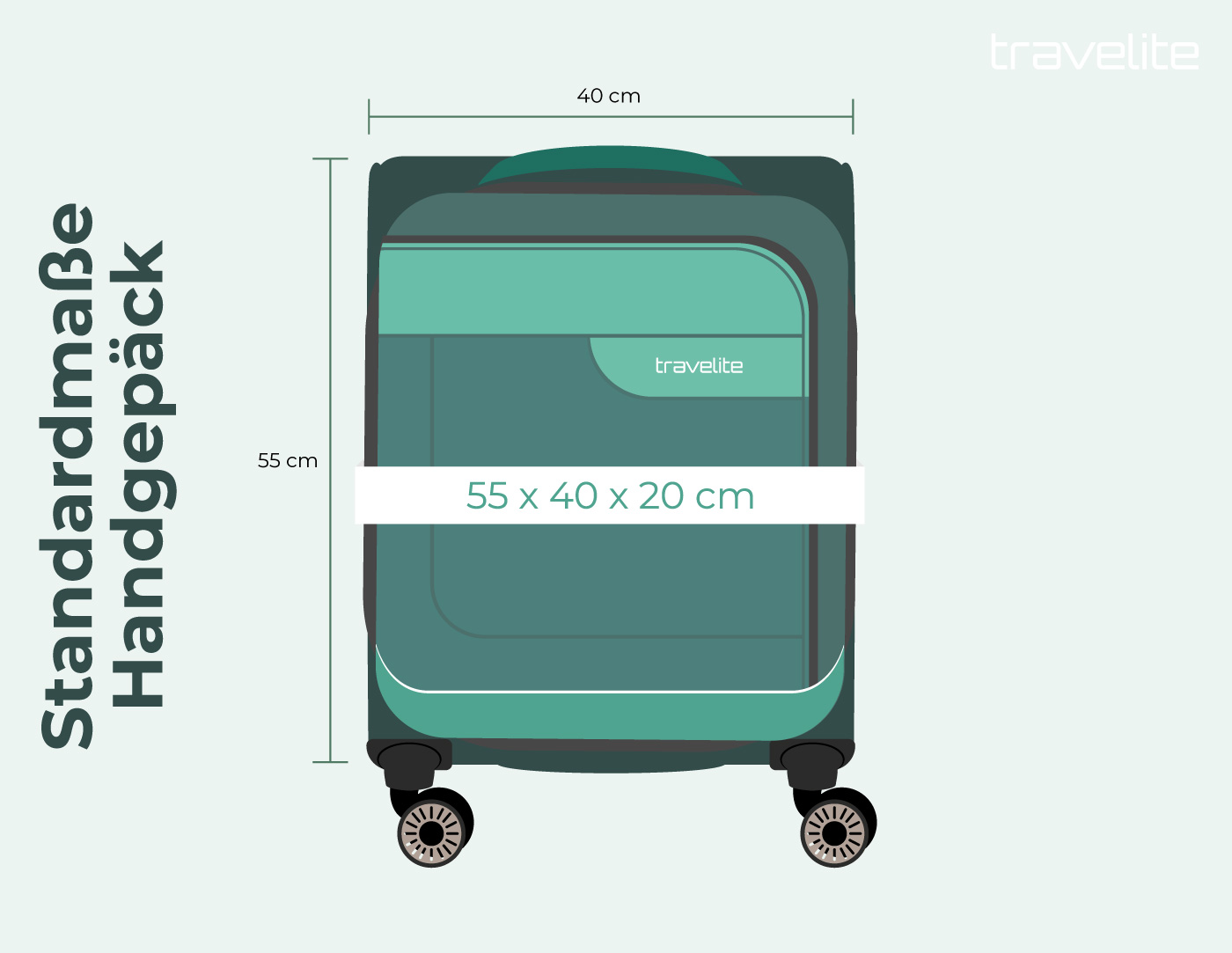
Baggage sizes of the major airlines at a glance
| Airline | Maximum weight | Maximum size |
|---|---|---|
| Lufthansa | 8kg | 55 x 40 x 23 cm |
| Ryanair | 10kg* | 55 x 40 x 20 cm |
| TUI | 6kg | 55 x 40 x 20 cm |
| Eurowings | 8kg* | 55 x 40 x 23 cm |
| Condor | 8kg* | 55 x 40 x 20 cm |
*There may be deviations due to additional options etc. Please check directly with your airline.

Baggage sizes of the major airlines at a glance
| Airline | Maximum weight | Maximum size |
|---|---|---|
| Lufthansa | 8kg | 55 x 40 x 23 cm |
| Ryanair | 10kg* | 55 x 40 x 20 cm |
| TUI | 6kg | 55 x 40 x 20 cm |
| Eurowings | 8kg* | 55 x 40 x 23 cm |
| Condor | 8kg* | 55 x 40 x 20 cm |
*There may be deviations due to additional options etc. Please check directly with your airline.
How many pieces of luggage can I use as hand luggage?
How many pieces of luggage you can check in as hand luggage depends on your booked travel class. In economy class, you can take one piece of luggage as hand luggage, in business class and first class, many airlines allow two units.
Some airlines allow you to take additional baggage on the plane free of charge in addition to your actual hand luggage. This can be a small piece of luggage in the form of a handbag or laptop bag, a baby carrier or a mobility aid such as a wheelchair or walker. A jacket or an umbrella are also no problem as additional luggage.
How many pieces of luggage can I use as hand luggage?
How many pieces of luggage you can check in as hand luggage depends on the class of travel you have booked. In Economy Class, you can take one piece of luggage as hand luggage, in Business Class and First Class many airlines allow two units.
Some airlines allow you to take additional luggage on the plane free of charge in addition to the actual hand luggage. This can be a small piece of luggage in the form of a handbag or laptop bag, or a baby carrier or mobility aid such as a wheelchair or walker. A jacket or an umbrella are also no problem as additional luggage.
Packing hand luggage correctly - the most important tips before your trip
When the long-awaited trip is approaching and the suitcase packing is due, many people are often faced with a conundrum: Where to put all your things? Often, a large piece of luggage can be used for extra volume, which is transported in addition. If you are only travelling with hand luggage, our tips will certainly help you to use the volume efficiently and cleverly.
Tips for efficient organisation of hand luggage:
- Stow heavy items at the bottom (this way you avoid damaging anything)
- Keep important documents such as travel documents and medications handy
- Place items that may need to be presented to customs officials during the security check (e.g. liquids) at the top of the zip
- Roll clothes compactly instead of folding them (this saves space and avoids creases)
- Use a free extra piece of luggage (such as a handbag)
- Place small items in separate bags (e.g. jewellery)
Packing hand luggage correctly - the most important tips before your trip
When the long-awaited trip is approaching and the suitcase packing is due, many people are often faced with a conundrum: Where to put all your things? Often, a large piece of luggage can be used for extra volume, which is transported in addition. If you are only travelling with hand luggage, our tips will certainly help you to use the volume efficiently and cleverly.
Tips for efficient organisation of hand luggage:
- Stow heavy items at the bottom (this way you avoid damaging anything)
- Keep important documents such as travel documents and medications handy
- Place items that may need to be presented to customs officials during the security check (e.g. liquids) at the top of the zip
- Roll clothes compactly instead of folding them (this saves space and avoids creases)
- Use a free extra piece of luggage (such as a handbag)
- Place small items in separate bags (e.g. jewellery)
hand luggage
The most important items of your hand luggage
- Important documents (travel documents such as flight tickets, passport, identity card)
- Valuable personal items (purse, jewellery)
- Means of payment
- Medication
- A change of clothes
- Toiletries
- Food and drink
- Technical equipment (e.g. laptop, camera, charging cable, powerbank, headphones)
- Universal socket adapter
Which piece of luggage you use as hand luggage depends on your personal preferences - each brings advantages and disadvantages. A hard-sided suitcase is robust and durable, but weighs an average of 2.5k kg even in a small size, which is not to be underestimated with a maximum weight of 8 kg for hand luggage. A travel bag is lightweight and stows well without contents, but does not offer protection from mechanical impact and is therefore not shockproof. But what about softside suitcases? These are also available as hand luggage and are significantly lighter.
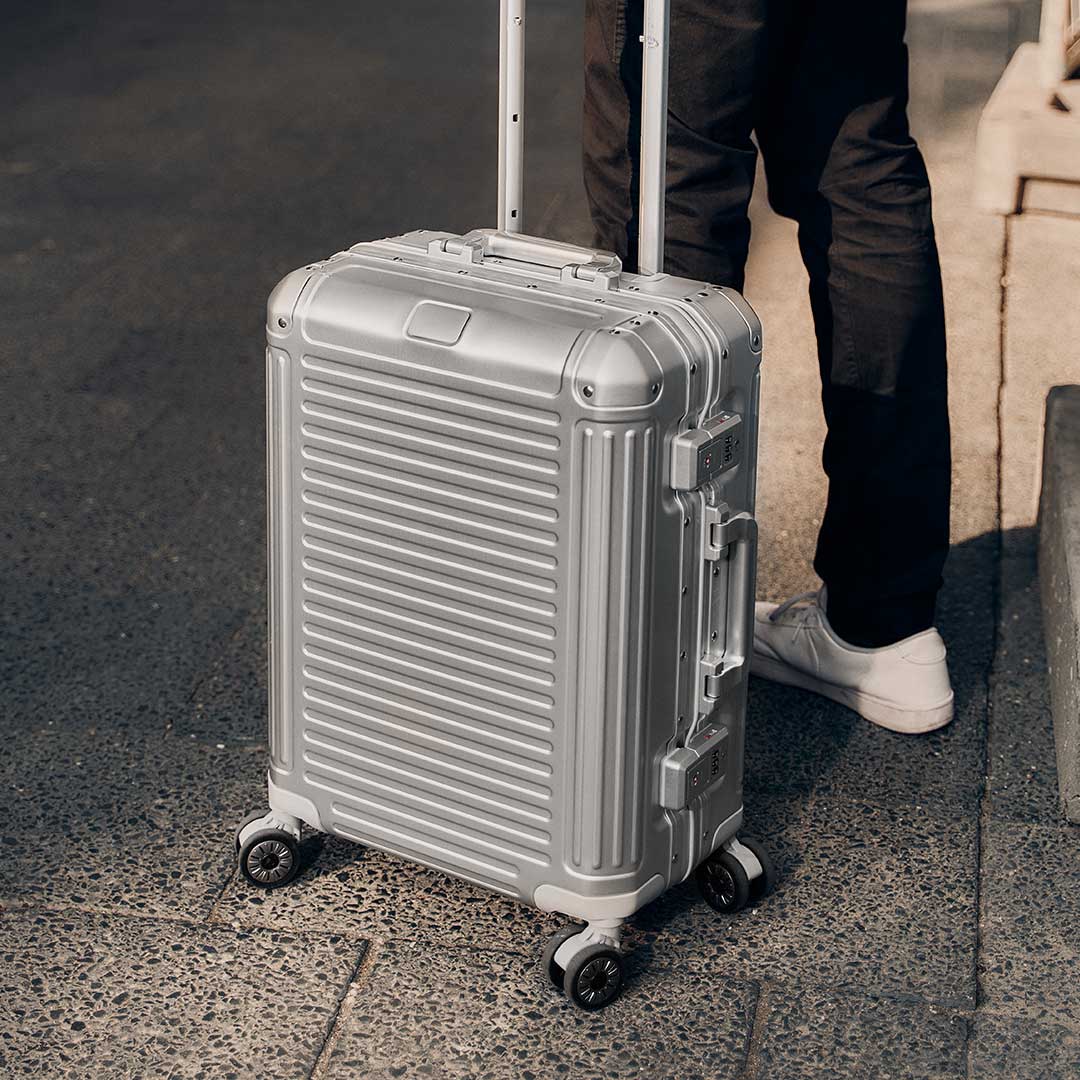

The most important items of your hand luggage
- Important documents (travel documents such as flight tickets, passport, identity card)
- Valuable personal items (purse, jewellery)
- Means of payment
- Medication
- A change of clothes
- Toiletries
- Food and drink
- Technical equipment (e.g. laptop, camera, charging cable, powerbank, headphones)
- Universal socket adapter
Which piece of luggage you use as hand luggage depends on your personal preferences - each brings advantages and disadvantages. A hard-sided suitcase is robust and durable, but weighs an average of 2.5k kg even in a small size, which is not to be underestimated with a maximum weight of 8 kg for hand luggage. A travel bag is lightweight and stows well without contents, but does not offer protection from mechanical impact and is therefore not shockproof. But what about softside suitcases? These are also available as hand luggage and are significantly lighter.
Hand luggage and customs regulations
When travelling, it is not only important to observe the airlines' guidelines for hand luggage, but also the customs regulations. These rules determine which items and goods you are allowed to carry in your hand luggage, especially when crossing international borders.
Which goods are subject to customs regulations?
When travelling abroad or returning to your home country, there are certain goods that are subject to customs regulations. These include first and foremost
- Alcohol and tobacco products: The import of alcohol and tobacco is subject to strict restrictions in most countries. There are fixed quantities that may be carried duty-free. Anything in excess of this must be declared and may be subject to customs duty.
- Food and plants: Many countries have strict regulations on the import of food, especially fresh produce, meat or dairy products. Plants and seeds are also often subject to strict controls to prevent the introduction of pests or diseases.
- Valuable items: Electronics, jewellery or large sums of money may need to be declared on entry to avoid problems at customs.
No matter where you're travelling to, we hope our hand luggage guide has helped you to be well prepared. Have a good trip and enjoy packing!
Hand luggage and customs regulations
When travelling, it is not only important to observe the airlines' guidelines for hand luggage, but also the customs regulations. These rules determine which items and goods you are allowed to carry in your hand luggage, especially when crossing international borders.
Which goods are subject to customs regulations?
When travelling abroad or returning to your home country, there are certain goods that are subject to customs regulations. These include first and foremost
- Alcohol and tobacco products: The import of alcohol and tobacco is subject to strict restrictions in most countries. There are fixed quantities that may be carried duty-free. Anything in excess of this must be declared and may be subject to customs duty.
- Food and plants: Many countries have strict regulations on the import of food, especially fresh produce, meat or dairy products. Plants and seeds are also often subject to strict controls to prevent the introduction of pests or diseases.
- Valuable items: Electronics, jewellery or large sums of money may need to be declared on entry to avoid problems at customs.
No matter where you're travelling to, we hope our hand luggage guide has helped you to be well prepared. Have a good trip and enjoy packing!



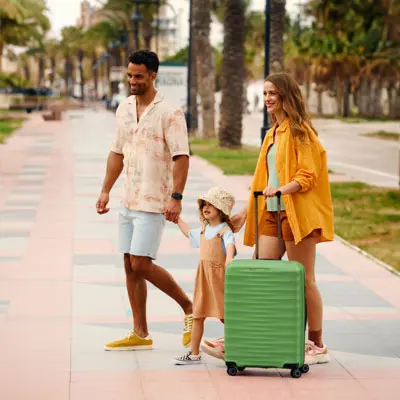

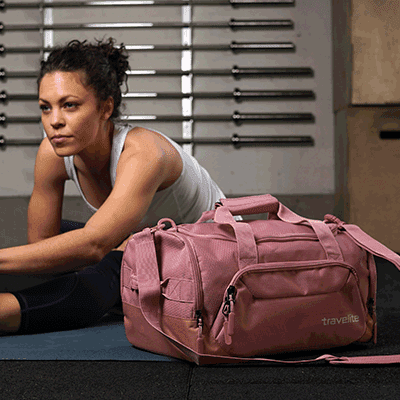
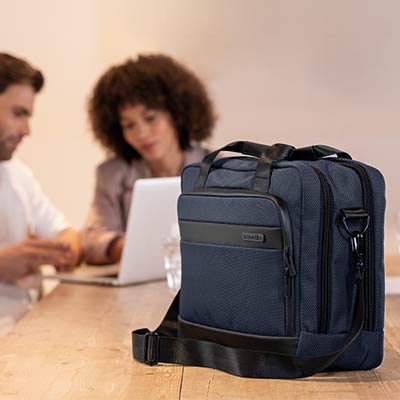





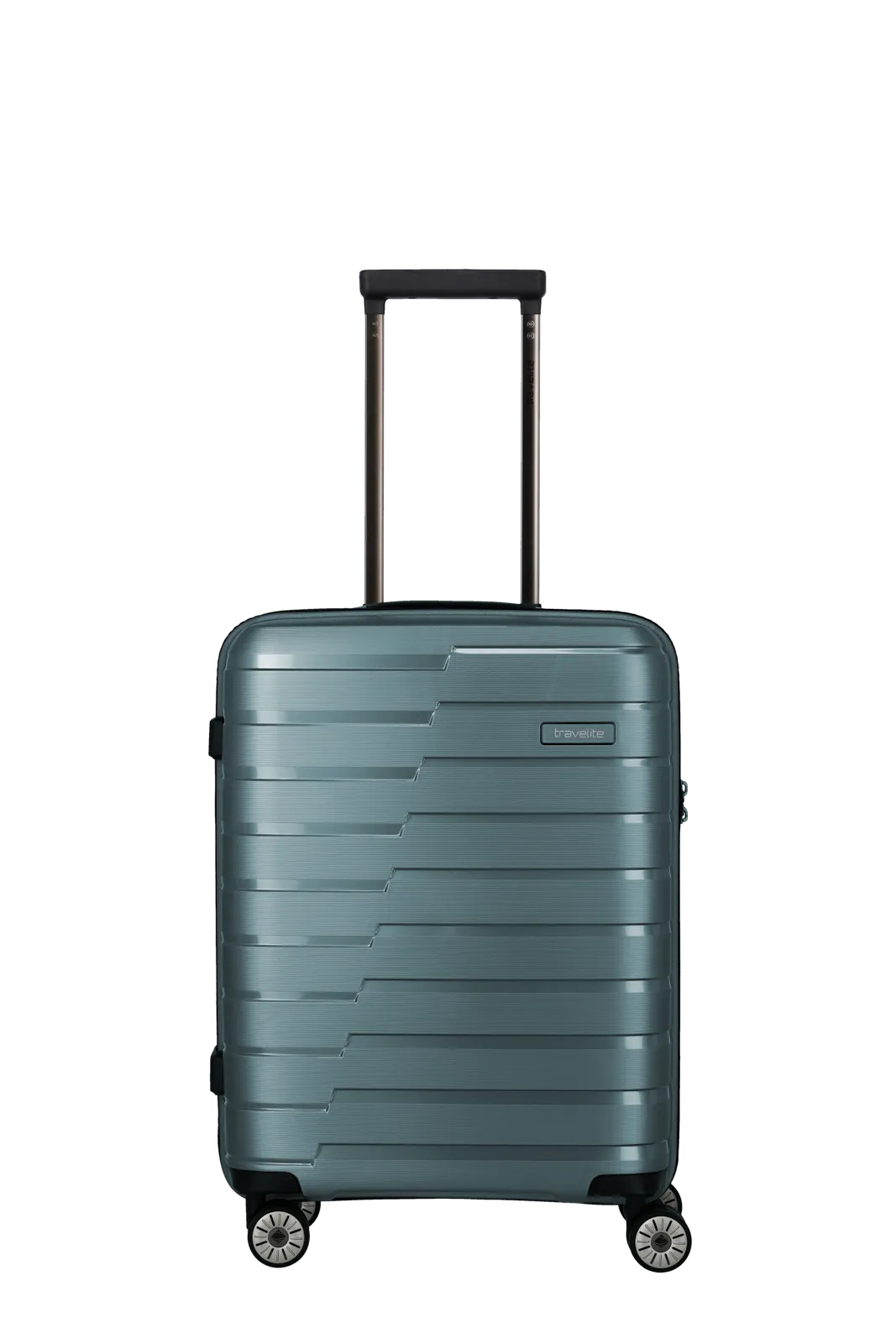


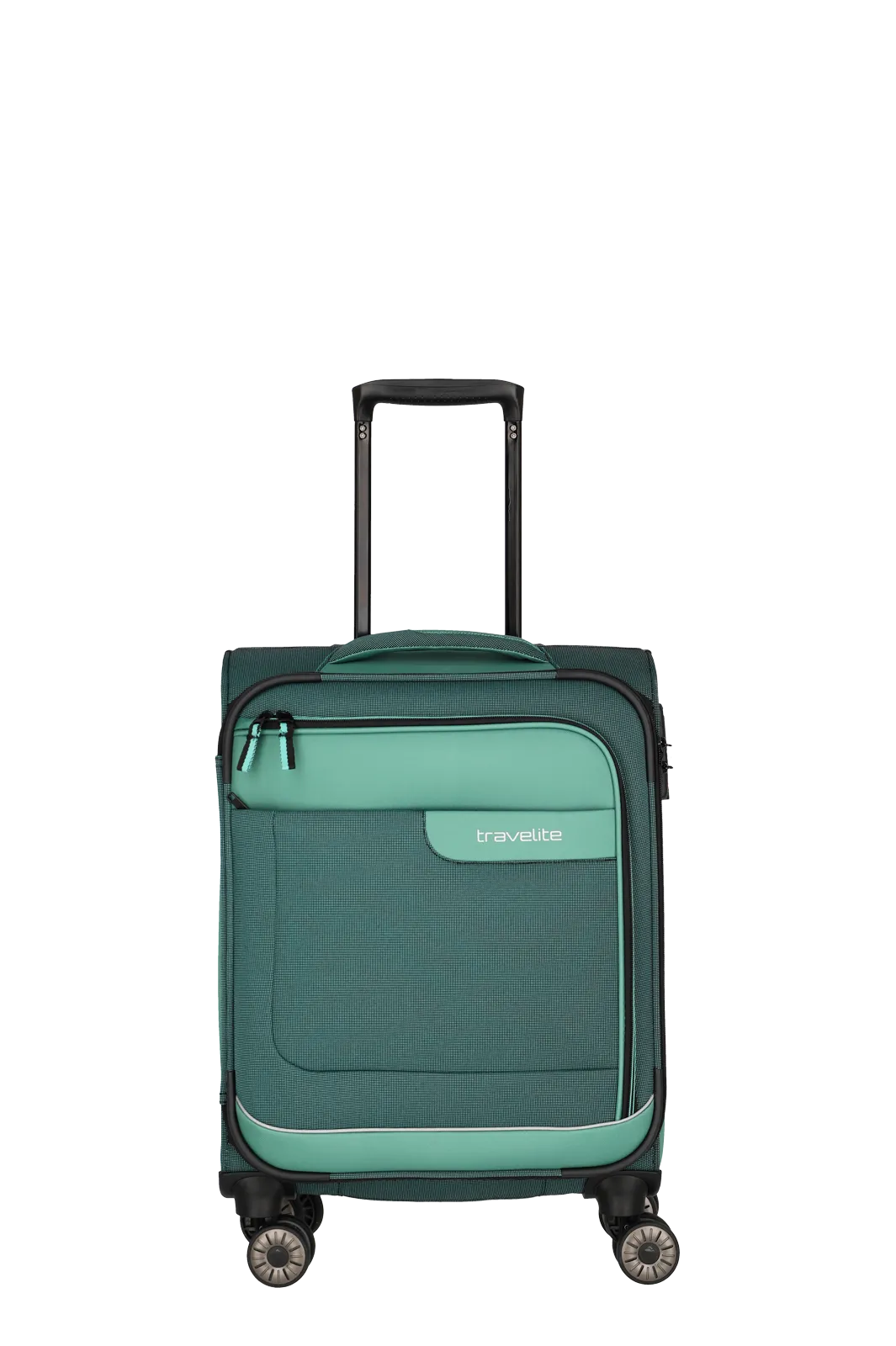




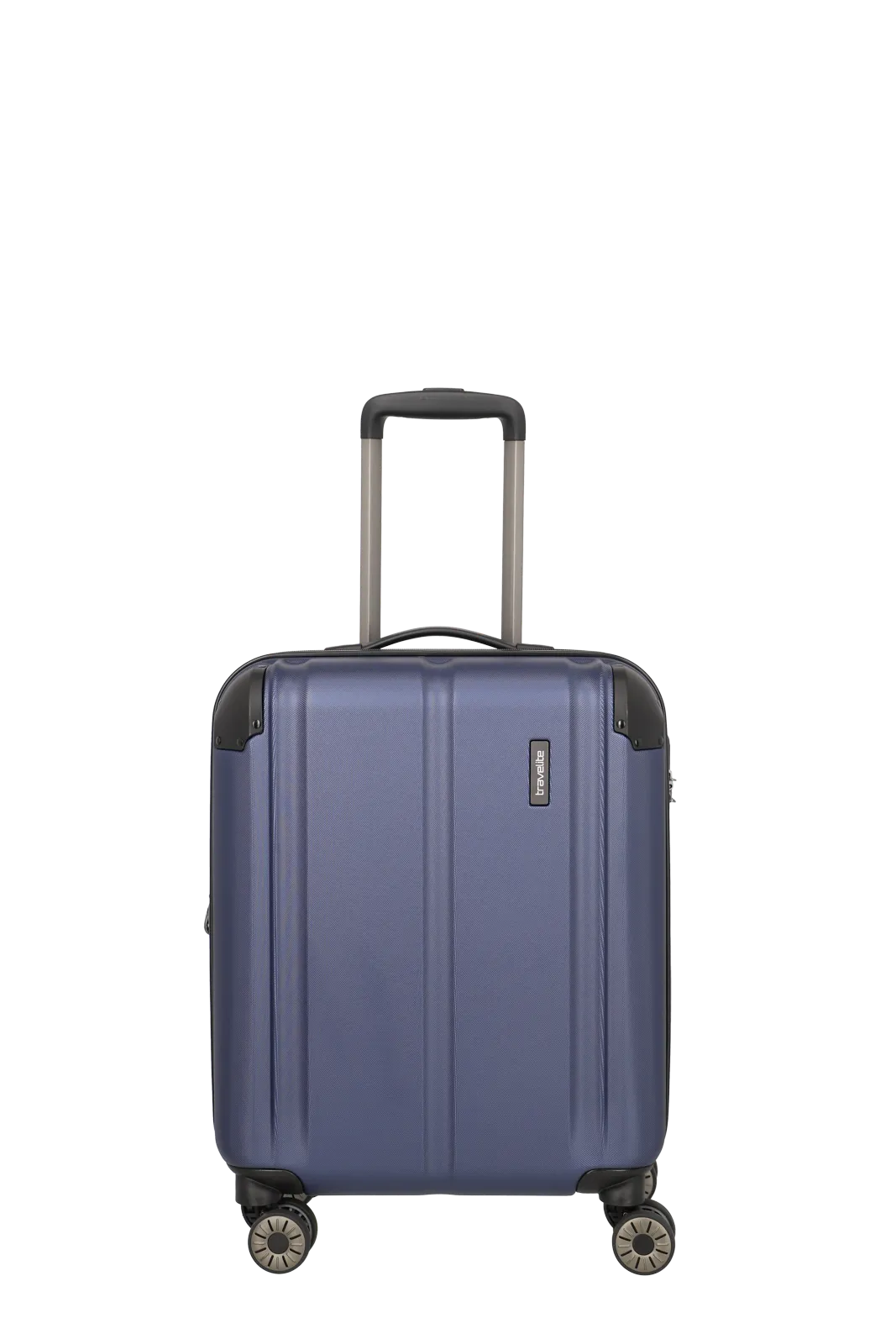
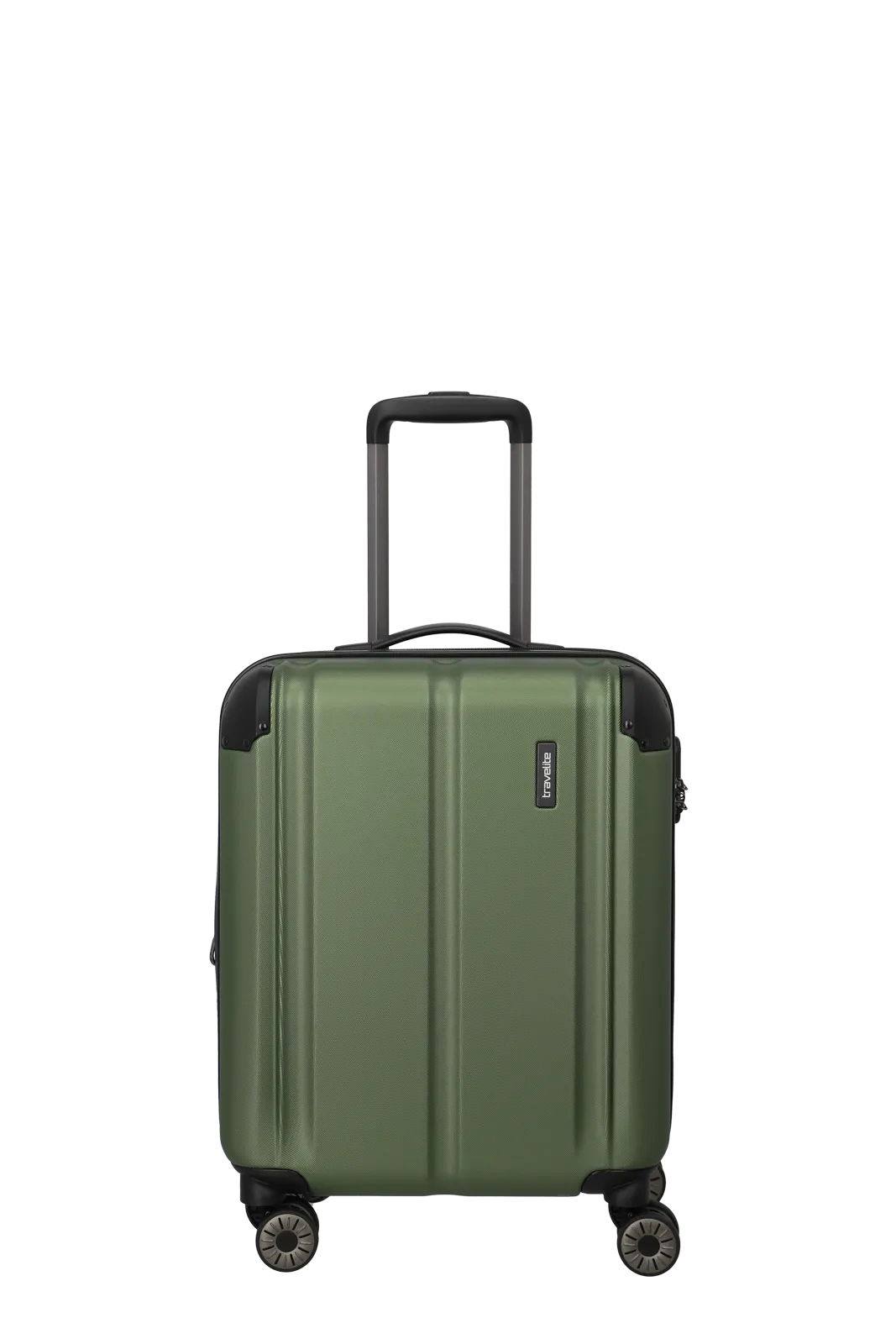





.png?ts=1750248453)

